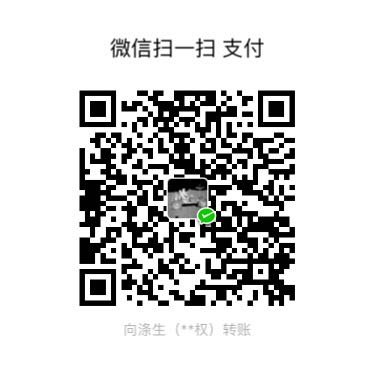概述
表视图组成
表视图是iOS开发中最重要的视图,它以列表的形式展示数据。表视图又一下部分组成:
- 表头视图:表视图最上边的视图
- 表脚视图:表视图最下边的视图
- 单元格(cell):表视图中每一行的视图
- 节(section):由多个单元格组成,应用于分组列表
- 节头
- 节脚
表视图的相关类
UITableView继承自UIScrollView,且有两个协议:UITableViewDelegate和UITableViewDataSource。此外UITableViewCell类时单元格类,UITableViewController类时UITableView的控制器,UITableViewHeaderFooterView用于为节头和节脚提供视图。

表视图分类
- 普通表视图:主要用于动态表,而动态表一般在单元格数目未知的情况下使用
- 分组表视图:一般用于静态表,用来进行界面布局
单元格的组成和样式
单元格由图标、主标题、副标题、扩展视图组成,可以根据需要进行选择,其中内置的扩展视图在枚举类型UITableViewCellAccessoryType中定义:
| Swift枚举成员 | Objective-C枚举成员 | 说明 |
|---|---|---|
| none | ITableViewCellAccessoryNone | 没有扩展图标 |
| disclosureIndicator | UITableViewCellAccessoryDisclosureIndicator | 扩展指示器,为箭头+问号 |
| detailDisclosureButton | UITableViewCellAccessoryDetailDisclosureButton | 细节展示图,为问号 |
| checkmark | UITableViewCellAccessoryCheckmark | 选中标志,图标为勾 |
| detailButton | UITableViewCellAccessoryDetailButton | 细节详情展示,图标为问号 |
内置的单元格样式在枚举类型UITableViewCellStyle中定义:
| Swift枚举成员 | Objective-C枚举成员 | 说明 |
|---|---|---|
| default | UITableViewCellStyleDefault | 默认样式 |
| subtitle | UITableViewCellStyleSubtitle | 有图标、主标题、副标题、副标题在主标题的下面 |
| value1 | UITableViewCellStyleValue1 | 有主标题、副标题,主标题左对齐、副标题右对齐,可以有图标 |
| 2alue3 | UITableViewCellStyleValue2 | 有主标题、副标题,主标题和副标题居中对齐,无图标 |
数据源协议与委托协议
UITableViewDataSource
数据源协议主要为表视图提供数据,主要方法如下
| 方法 | 返回类型 | 说明 |
|---|---|---|
| func tableView(UITableView, cellForRowAt: IndexPath) | UITableViewCell | 为表视图单元格提供数据,必须实现 |
| tableView(UITableView, numberOfRowsInSection: Int) | Int | 返回某个节中的行数,必须实现 |
| tableView(UITableView, titleForHeaderInSection: Int) | String | 返回节头的标题 |
| tableView(UITableView, titleForFooterInSection: Int) | String | 返回节脚的标题 |
| numberOfSections(in: UITableView) | Int | 返回节的个数 |
| sectionIndexTitles(for: UITableView) | [String]? | 返回表示图节索引标题 |
UITableViewDelegate
委托协议主要主要用来设定表视图中节头和节脚的标题,以及一些动作事件,主要方法如下
| 方法 | 返回类型 | 说明 |
|---|---|---|
| tableView(UITableView, didSelectRowAt: IndexPath) | 单元格响应事件 | |
| tableView(UITableView, accessoryButtonTappedForRowWith: IndexPath) | 扩展视图响应事件 |
简单表视图
UIViewController根视图控制器实现表视图
步骤
- 创建一个iOS工程
- 从对象库中拖入一个TableView到storyboard文件中,并将TableView覆盖整个View
- 打开Table View的属性检查器,将PrototypeCells的值设为1,注意不要添加多个,否则会发生错误;此时Table View会添加一个Table View Cell。
- 打开Table View Cell的属性检查器,设置Identifier属性。
- 注册UITableViewDataSource和UITableViewDelegate协议
- 编写代码实现功能
实现
|
|
示例图
- none模式

- disclosureIndicator

UITableViewController根视图控制器实现表视图
步骤
- 创建一个iOS工程
- 删除storyboard中View Controller Scene 中的View Controller,再从对象库拖入一个Table View Controller到设计界面
- 打开Table View Controller属性检查器,勾选Is Initial View Controller选项,否则应用启动后是黑屏
- 将ViewController类的父类由UIViewController改为UITableViewController
- 打开View Controller的属性选择器在Class列表中选择ViewController
- UITableViewController默认以注册UITableViewDataSource和UITableViewDelegate协议,不需要再注册
实现
|
|
示例图
- detailButton模式

- checkmark模式

自定义单元格
步骤
- 创建一个表视图工程
- 修改根视图控制器为表视图控制器UITableViewController,参照上节的步骤
- 从对象库中拖入控件到单元格内部,比如Lable和ImageView
- 创建自定义单元格类CustomCell文件,并继承UITableViewCell类
- 在设计界面中选择View Controller Scene中的Table View Cell,并打开属性检查器,将Class设为CustomCell类,并设置单元格的Identifier
- 为单元格中的控件Label和ImageView控件连接输出接口,将控件绑定到CustomCell类中
- 打开ViewController类,编写代码实现
实现
- CustomCell类
|
|
- ViewController类
|
|
示例图

